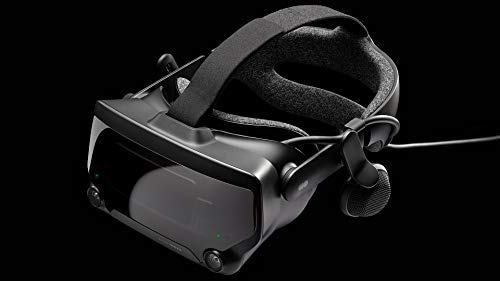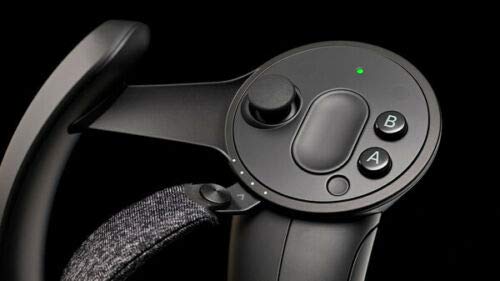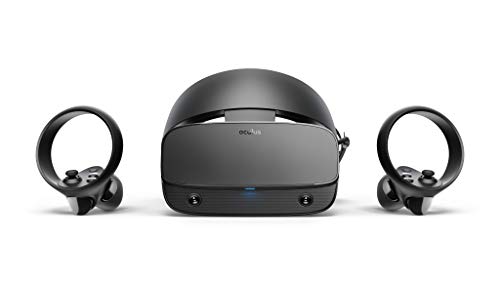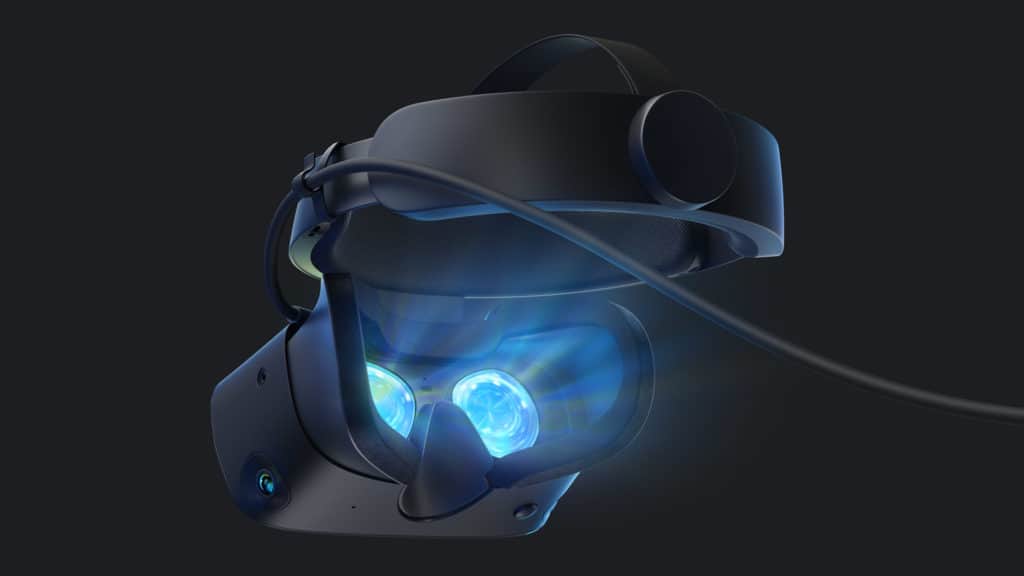Valve Index vs Oculus Rift S – Which Will You Love More?
When it comes to quality VR, there are two schools of thought. One is that it doesn’t matter how much it costs, it should be high-quality technology that delivers an exceptional experience.
The other is that it should be affordable and accessible to the masses, with ‘good enough’ technology that the majority of people will likely have a great experience without noticing its deficits.
The Valve Index and the Oculus Rift S fit into those two categories, respectively. But you’ll need to know more before you make a decision.
Main Differences Between Valve Index vs Oculus Rift S
The main differences between Valve Index vs Oculus Rift S are:
- Valve Index is very high-priced, whereas Oculus Rift S is not.
- Valve Index has a very wide field of view, whereas Oculus Rift S does not.
- Valve Index do not have an Insight room tracking technology, whereas Oculus Rift S does and uses cameras instead of base stations.
- Valve Index has great screen resolution, whereas Oculus Rift S didn’t upgrade theirs over the original version.
Valve Index

Valve is a gaming company that did their part to pioneer virtual reality as it is today. They developed several prototypes and made their own sophisticated room tracking system. They partnered with HTC to produce the Vive system but had yet to release their own hardware…until last year.
The premium Valve Index is pretty pricey and you still need a gaming PC and a wired connection to use it. You can also find plenty of other options that have a better resolution or wider fields of view.
However, if you want lifelike graphics, excellent design, and intuitive controllers, this system is your best bet.
Room tracking
While Valve uses the same room tracking technology as the Vive, they’ve released the Index with second-generation base stations. This offers users a few benefits over the old technology.
You now have an expanded diagonal range of 10 square meters if you use four base stations instead of the standard two that come in the box.
Vive users can pair their old base stations with the new Index base stations because the Index is backwards compatible. It will save you a couple of Benjamins not having to order two extra-base stations.
While syncing problems seem to be fewer with the second generation, it can still be frustrating to set up. It requires more time to get your base stations positioned and calibrated correctly. Not to mention, the more of them you have, the longer it takes.
A lot of VR headsets have moved to front-mounted cameras, which eliminates the need for external hardware. The set up is much easier and practically seamless, but room tracking also isn’t as realistic. You have to take the good with the bad in that case.
If you’re new to VR technology, setting up base stations probably isn’t the route you should go. However, if you’ve been using this type of setup in your VR devices for a while, you may prefer to stick with it.
Valve put a lot of time and energy into fine-tuning their base station design, and it’s well worth it if you know how to use it.
Comfort
Good headset design leads to comfortable padding and an adjustable headband. Turn the dial on the back to cinch it down or loosen it for your head. The straps are padded for extra comfort.
While it’s not a particularly light headset, you can use it for a couple of hours without feeling it too much.
You can also adjust the lens distance from each other or your eyes. Turn another dial to bring everything into perfect focus and get control over the image you see.
While most users are fine without these focus features, Valve is attempting to make a headset that accommodates the widest variety of users.
The built-in speakers add to the comfort by sitting an inch away from your ears. Rather than including headphones, they’ve given their users a rich, realistic experience that projects ambient sound and doesn’t hug too tightly.
If you’d rather not have everyone around you hear what you’re doing, you can always plug in your own speakers. While it’s an intense sound system, you can’t use it in professional settings or while other people in your house are sleeping.
Design

The headset is big, bold, and attention-grabbing. It’s covered in sliders and dials. The shiny plastic piece on the front resembles the Rift S design. It’s clunky, but for good reason. It’s expensive hardware and it doesn’t feel cheap.
It has two cameras that allow for a real world view, so making room for those adds some bulk.
Controllers
The Index controllers are unique and futuristic. They strap onto your hands, which is a plus because you can’t drop them. Rather than looking like a remote, they look more like a weapon.
The remote is full of sensors that can tell when your hands are close but not touching the controller. It can detect how hard you’re squeezing and it can track individual finger movements.
It’s a highly technological feature that also includes traditional controls on the top like two buttons, a trackpad, and an analogue stick.
When you use the Index controllers correctly, they feel natural. They settle on your hands comfortably and the strategic placement of the controls make them feel intuitive without distractions.
The Valve demo is a convenient way to test out how the controllers work before entering gameplay by testing your grip strength or playing rock-paper-scissors.
Unfortunately, developers want to release their games on many different platforms, so they’re not including many interactions specific to the Index at this point. Most Vive and Rift games translate well, though.
Screen
The 1440 x 1600 pixel resolution is the same as the Vive Pro. While headsets with a larger pixel count exist, you’ll find a lot of other premium features on the Index that you won’t find anywhere else.
The images are smooth and bright, thanks to the 120Hz refresh rate. Even on a gaming PC with lower specs, you’ll enjoy the visuals and experience.
Your field of view will change based on how you adjust your lens distance, but you can achieve up to 130 degrees if you dial the lenses all the way in. However, some may find gameplay uncomfortable with the lenses this close to their eyes.
Pros:
- Large field of view
- Comfortable headset
- Revolutionary controllers
Cons:
- Expensive
- Room tracking uses external hardware
- Requires a wired connection to your PC
Oculus Rift S

This significant upgrade to the original Rift is a second-generation that really looks nothing like the first. While the Rift played its part in making virtual reality real, the S is a brand new look with some new features and not much of a price bump.
It came out at the same time as the Oculus Quest, which was appealing due to its wireless connection, but the Rift S still featured the better technology and exclusive experiences.
Room tracking
The primary advancement on the Rift S is the Insight system. This is the proprietary tracking system that uses cameras in the headset instead of external base stations. It’s a feature that the Oculus Quest uses, which helps to make it wireless, but it’s a nice, all-inclusive feature on the Rift S, too.
The Rift S has five built-in cameras. There are two on the front, one on each side, and one on the top. This gives more range to your hands and makes your experience a bit more comprehensive.
While you still have to be tethered to your computer, you don’t have to set up any base stations or use all of the USB ports on your PC to power the system. The five-camera setup tracks your controllers much better and there are fewer wires to contend with.
Just plug in one USB cable, power up the Oculus desktop software, and follow the installation instructions. To draw the boundaries of your room, put on the headset and grab the controllers. All you have to do is trace lines on your real world video feed.
Comfort
The design might be boring (we’ll get to that in a minute), it’s been optimized for comfort. Rather than plastic head straps, it has a halo-shaped ring that sits around your head and uses a wheel at the back to tighten to the right fit.
While it weighs more than the original Rift because of the tracking cameras, it’s much more comfortable than both the original Rift and the Quest.

Design
Much like the Index, the Rift S has built-in speakers rather than headphones. They direct the sound to your ears, but you can also use your own headphones if you prefer your sound not to leak.
The headset itself is manufactured by Lenovo, and it’s surprisingly bland. It takes some elements from Sony’s PlayStation VR and the Lenovo Mirage Solo.
The manual slider has been removed so you can’t adjust the distance between your lenses. There’s a software feature that compensates for that, but a lot of people have noticed a markedly narrower field of view.
However, you can slide the screen forward and backwards, much like the PlayStation VR, which helps the fit for those with glasses.
For those who are used to the original Rift design, the Rift S is disappointing. It looks like a bulky robot with a huge forehead.
Controllers
The Touch controllers are newly redesigned and ship with both the Rift S and the Quest. They’re not too much different than the old controllers, but they were already some of the best VR controllers available, so there’s not much to improve.
Screen
The screen resolution is improved over the old Rift from 1200 x 1080 to 1280 x 1440. It’s not as high as the Quest, and because the refresh rate is only 80Hz rather than the 90Hz of the original, you may notice lower quality imaging or screen flickering.
Most virtual reality headsets aim for a 90Hz refresh rate to reduce motion sickness, so that could be an issue for some. Unfortunately, three years didn’t improve the screen at all.
While this may be a disappointment, it simply means you don’t need a more powerful computer, so take comfort in saving money there.
Pros:
- Improved room tracking with Insight
- Great Touch controllers
- Comfortable
Cons:
- No improved screen resolution
- Unattractive design
- Wired connection
Comparison Chart
Here’s a quick overview of the specs of each device.
| Valve Index | Oculus Rift S | |
| Screen | Dual LCD | Dual fast-switch LCD |
| Resolution | 1440 x 1600 each eye | 1280 x 1440 each eye |
| Refresh rate | 80, 90, 120, or 144Hz | 80Hz |
| Field of view | Adjustable up to 130 degrees | Oculus says, “slightly higher than Rift” |
| Tracking | Base stations | 5 built-in cameras |
| Face cushion | Foam-covered microfiber | Soft foam on rubber interface |
| Cameras | 3 | 5 |
| Weight | 1.78 lbs | 1.2 lbs |
FAQs
Here are some frequently asked questions for those of you still debating about which system to purchase.
Just like most virtual reality systems, you’ll need a gaming PC to make it work. Here are the minimum requirements:
– OS: Windows 10
– Processor: Dual core with hyper-threading
– Graphics: NVIDIA 970 or AMD RX480
– Network: Broadband internet
– Ports: USB and DisplayPort
The Valve Index is only available at the Steam Store. There are quite a few bundles to choose from so you can configure your system however you want to use it. However, it’s not available anywhere else.
Valve delivers some of the best virtual reality technology in the Index. Its high price would indicate that it’s one of the best on the market, and it is. However, you can still get excellent VR for a much lower price.
If you’re looking for value, the Valve Index isn’t it. However, if you have the cash and you want awesome graphics, unique controllers, and a cool experience, it’s a fun system to have.
While the Rift S has a higher screen resolution, it’s only slightly better than the original. It’s still not as high as the Oculus Quest or a lot of other VR solutions out there. Unfortunately, the refresh rate and the design were both downgraded, making it a disappointing upgrade.
On the plus side, they’ve included 5 built-in cameras to improve the room tracking technology without the need for base stations. And if you never used the Oculus Rift, you might not notice the disappointing downgrades.
Because of the Insight tracking technology, you don’t need any external sensors for the Oculus Rift S. This simplifies setup and makes it so much easier to get going faster. However, you do have to have enough light for the cameras to scan the room around you.
If you’ve never used the Oculus Rift, then the Rift S is a better choice. However, if you’re familiar with the Rift system and you’re looking to upgrade, you might want to take a look outside of the Oculus family, because the Rift S isn’t so much better as to make it a true upgrade for you.
The Verdict
The Index isn’t the best VR headset and they’ve priced themselves out of the market for almost everyone except die hard gamers. However, it delivers a high-quality VR experience with very little compromise.
The Oculus Rift S offers great value with the elimination of external base stations for room tracking. The built-in cameras and Insight software are easy to set up and use. While it’s not much of an upgrade over the original Rift, you won’t notice if you’ve never used the Rift, and it’s rather affordable.
The post Valve Index vs Oculus Rift S – Which Will You Love More? appeared first on All Home Robotics.

![[QILIN] - Ransomware Victim: Mainetti 5 image](https://www.redpacketsecurity.com/wp-content/uploads/2024/09/image-300x300.png)

